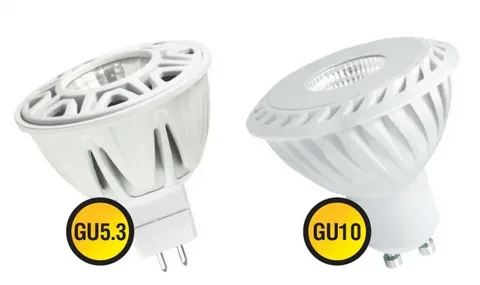When it comes to spotlights and directional lighting, two names often come up: MR16 and PAR16. At first glance, these bulbs may seem interchangeable—they’re similar in size, shape, and are both available in LED options. But beneath the surface, they serve different functions and come with distinct technical characteristics.
If you’re upgrading your lighting or replacing older halogens, understanding the key differences in the MR16 vs PAR16 debate can save you time, money, and potential frustration.
What Do MR16 and PAR16 Mean?
Let’s break down the acronyms:
- MR16 stands for Multifaceted Reflector and is 2 inches in diameter (16 eighths of an inch).
- PAR16 stands for Parabolic Aluminized Reflector and is also 2 inches in diameter.
So, while they share the same diameter, the way they reflect and project light is quite different.
Reflector Shape and Light Output
This is where the primary difference lies:
- MR16 bulbs use a multifaceted reflector to create a focused, narrow beam—ideal for accent lighting, art displays, and task-specific setups.
- PAR16 bulbs use a parabolic reflector and often include a lens to shape and control the beam. These are better for general lighting, track systems, and directional downlighting.
If you want precision and spot focus, MR16 wins. If you need broader, evenly distributed light, PAR16 is your best bet.
Voltage and Base Compatibility
Here’s another major difference:
- MR16 bulbs typically run on 12V low voltage and use GU5.3 bi-pin bases. They require a transformer or driver.
- PAR16 bulbs usually run on 120V line voltage and use E26 screw-in bases, making them more plug-and-play in standard household fixtures.
For easy installation without modifying your fixture, PAR16 might be more convenient.
Applications: Where Each One Shines
Use MR16 in:
- Art galleries and museums
- Retail product lighting
- Under-cabinet or niche lighting
- Any setting that uses low-voltage wiring
Use PAR16 in:
- Ceiling cans and recessed fixtures
- Track lighting in kitchens or hallways
- Outdoor or security lighting (when enclosed and rated)
- Standard household sockets needing directional lighting
Each bulb is designed for a specific environment—make your decision based on the use case.
Light Control and Beam Angles
Both MR16 and PAR16 come in various beam angles, but:
- MR16 offers tighter beam angles for spotlighting (typically 15° to 40°)
- PAR16 provides wider options for floodlighting (ranging from 25° to 60°)
If you want to highlight a small area, go MR16. For broad coverage, go PAR16.
Energy Efficiency and Heat
Both are available in LED versions and offer significant energy savings compared to halogen. However, due to design:
- PAR16 LEDs tend to dissipate heat more effectively
- MR16 LEDs, being smaller and low-voltage, may generate less heat overall but may need ventilation
LEDs in either form are long-lasting and low-maintenance.
Still Not Sure Which to Choose?
If you’re still comparing the benefits of MR16 vs PAR16, don’t worry—we’ve got you covered. This in-depth guide on MR16 vs PAR16 explains how each bulb performs in real-world settings and which one fits best for your lighting goals.
Final Thoughts
Both MR16 and PAR16 bulbs have their place in modern lighting setups. The right choice depends on your fixture type, beam spread needs, installation convenience, and desired lighting effect.
- Choose MR16 for low-voltage, focused, task-specific lighting.
- Choose PAR16 for broad, directional lighting that works in standard sockets.
Making an informed decision ensures your lighting not only looks great but also functions flawlessly for years to come.







